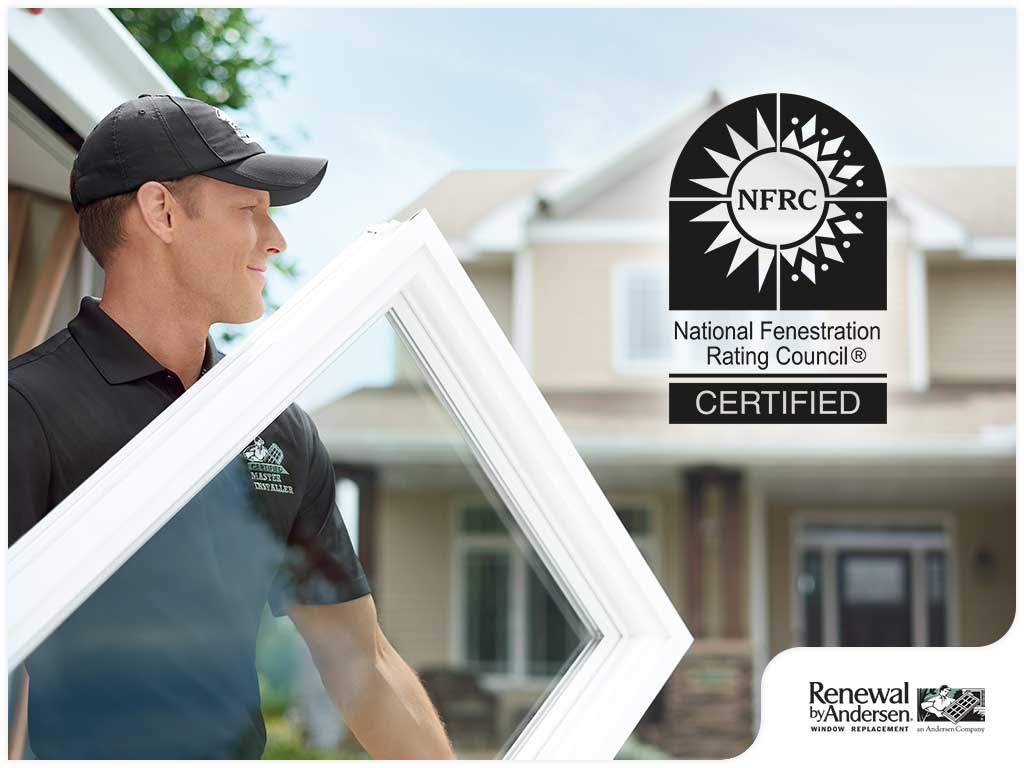

You should always look for the ENERGY STAR® label while shopping for an energy-efficient window replacement. Only windows that have complied with the EPA’s stringent energy requirements are certified by ENERGY STAR. Of course, not all ENERGY-STAR-certified windows have the same level of energy-efficiency. How can you pick an energy-efficient window from dozens that were certified by ENERGY STAR? By checking the National Fenestration Rating Council (NFRC) label.
What do the ratings on the NFRC label mean?
1. U-factor – The U-factor gives you an idea on the window’s insulative capabilities. The higher a window’s U-factor is, the better it can prevent heat transfer.
2. Solar Heat Gain Coefficient (SHGC) – The SHGC indicates how much heat from the sun can pass through a window. The lower a window’s SHGC is, the less heat that can pass through its glass panes.
3. Visible transmittance – A window’s visible transmittance indicates how much sunlight can pass through the window glass. The higher the visible transmittance rating, the more natural lighting a window can provide.
4. Air leakage – The air leakage rating, as the term suggests, gives homeowners an idea on how much air can enter their homes through windows. The lower the air leakage rating, the fewer drafts a window will let in.
What would be an ideal window replacement for homes in areas with temperate or moderate climates? Most contractors would recommend a window with a low U-factor and a high SHGC. The best place to install a window replacement is on the south side of your home, which usually receives the highest amount of sunlight. By installing a window on the south side of your home, you can take full advantage of the heat from the sun during winter.
How can you maximize the potential energy savings and ROIs from an energy-efficient window? Here are some window-shopping tips:
1. Maximize natural ventilation and lighting – Choose easy-to-open windows, such as sliding or casement windows, with a high visible transmittance rating to help improve the natural ventilation and lighting in your home. Aside from helping reduce household electricity consumption, improved natural lighting, coupled with adequate ventilation, can make your interior feel more spacious.
2. Choose windows with UV-filtering window glass – Ultraviolet (UV) rays can cause fading in hardwood flooring and furniture.
3. Pay attention to the frame material’s maintenance needs – Aside from the material’s insulative capabilities, you also need to take into account its maintenance needs. Wooden frames, for example, are known for their durability, but wood needs a lot of upkeep. Vinyl frames, on the other hand, have minimal maintenance needs, but they’re not as durable. If you want a window frame that has excellent durability and minimal maintenance needs, try looking for a Fibrex® window. Fibrex is a composite made of wood fiber and thermoplastic polymer that combines the best qualities of wood and vinyl. Fibrex is so durable that it’s able to hold the same amount of glass as a conventional window. This quality makes it ideal for windows with wide frames, like double-hung windows.
Maximize curb appeal – Make sure to pick a window that can blend in seamlessly with your exterior.
As part of our signature service, Renewal by Andersen customizes each window according to our customer’s needs and preferences. From the drafting of the design right down to its installation, we maintain strict oversight to ensure its quality. We also offer an extensive window catalog with a wide variety of choices, including double-hung and casement windows.
Want to learn more about our signature service?
Renewal by Andersen of Knoxville offers a wide variety of premium windows, including double-hung windows. To schedule a free consultation with one of our design experts, call us at (866) 609-5033 or leave us a message here. We serve homeowners in Knoxville, TN, as well as the surrounding communities in Tennessee.